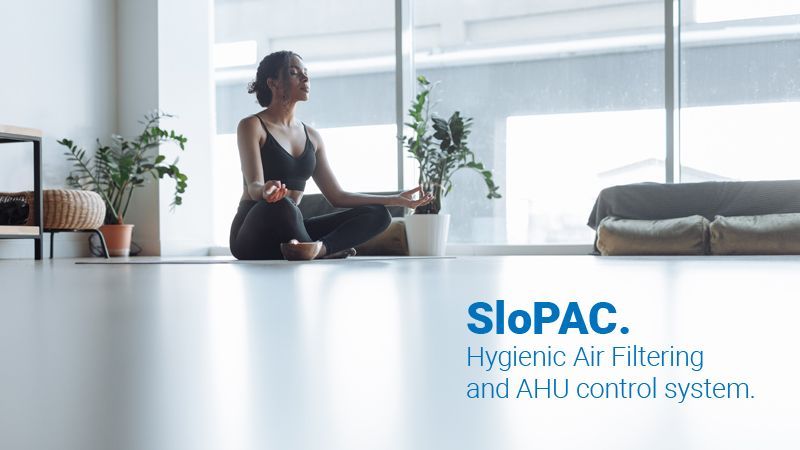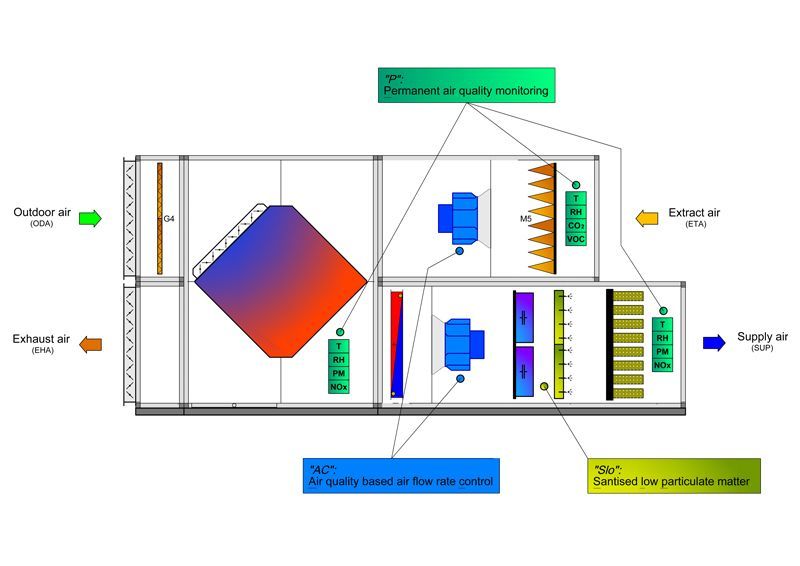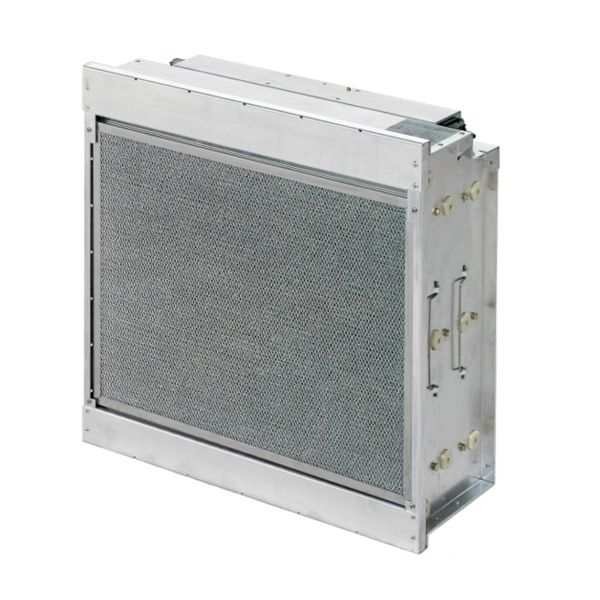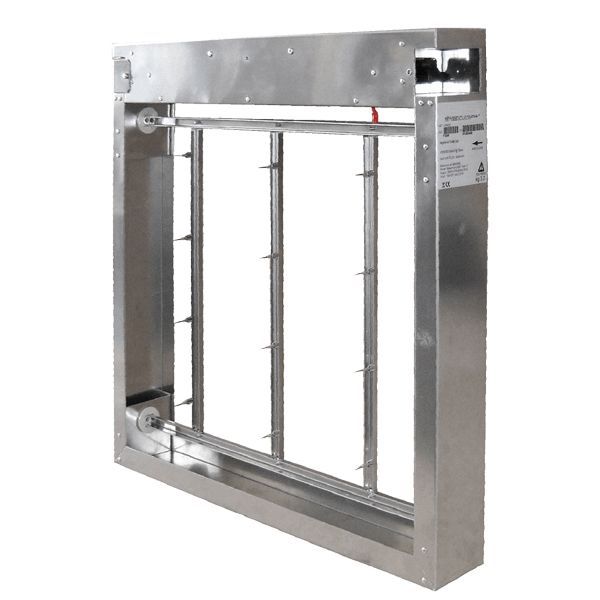What does SloPAC mean?
In today’s society people spend about 90% of their time indoors, frequently being referred to as “The Indoor Generation”.
Effective air treatment doesn’t get the attention it deserves – ultimately air is consumed by our bodies in vast qualities just like food, yet we pay little attention to it.
Our new advanced air treatment system focuses on the quality of the air in our buildings and actively improves it.
This new concept deals with two of the most important aspects of state-of-the art air treatment:
- Healthy air environment for occupants
- Energy saving
Our new SloPAC system achieves exactly these three points:
Slo ▶ Sanitised low particulate matter
P ▶ Permanent air quality monitoring
AC ▶ Air quality-based air flow rate control
“Slo” in detail
Sanitised low particulate matter is a 2-step filtering and treatment process consisting of Electrostatic filter and Ioniser.
Both components individually greatly improve air quality, but combining both technologies is far more effective, and creating an extraordinary and reassuring level of air sanitisation.
Electrostatic filters produce during operation minuscule quantities of ozone (less than 10 ppb), combined with the Ioniser this small quantity of ozone is enough to eliminate even more effectively airbourne bacteria and viruses.
Electrostatic filter (precipitator)
An electrostatic filter is based on the concept of electrostatic attraction.
The effect can be compared to the magnetic attraction of iron particles to a magnet.
The air flowing through the filter essentially gets two treatments:
- Electrical charging of the particles (Ionisation)
- Attraction and adherence on the charged plates
Ioniser
Numerous studies have repeatedly shown that negative ions in the air are able to neutralise bacteria, viruses and odours. For humans the air noticeably feels more fresh and pleasant if a high number of ions are present. This is naturally experienced in nature such as in dense wooded areas, mountains, waterfalls etc.
Fine particulate matter is charged by the ions emitted, this attracts them to each other and they bind together, ultimately increasing filtration efficiency. Also the charged ions destroys the cell structure of the microorganisms they come in contact with rendering them harmless.
“P” in detail
By means of modern sensor technology at 3 locations within the AHU the air quality is measured and delivers a comprehensive overview of the air quality in supply, extract and fresh air.
- T, RH, PM and NOx in outside and supply air
- T, RH, C=2 and VOC in extract air (room air)
In this way a detailed assessment of quality of air flow is possible at all times.
“AC” in detail
A fan needs ca. 700 W electrical energy per 1000 m³/h air flow rate (at 1500 Pa pressure development).
A reduction in air flow rate offers an enormous potential for electrical energy saving.
With the sensors constantly monitoring the air quality of the extract air in the AHU itself we are able to adapt the air flow rate perfectly to the buildings requirements, only increasing air flow to improve air quality when it is actually needed.




